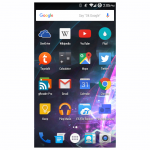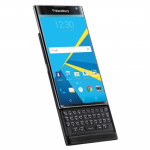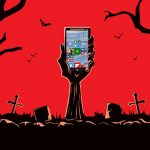Quality control and pet monkeys: My search for a decent laptop continues

What the hell is going on with quality control these days? It seems like every new PC I buy or test has something wrong with it right out of the box. Whether it’s a strange hardware failure, a bizarro software glitch, or something less easily definable, the new machine will undoubtedly go belly up in some fashion within the first six months.
Take Dell’s Inspiron 13, for example. In my quest to find a replacement for my HP Envy x2 (abandoned by Microsoft/Intel/HP) and, later, my Surface 3 (destroyed in an incident involving a moving vehicle, alcohol, and an undomesticated pet monkey), I took one of the company’s 7000 series 2-in-1s home for a weekend of testing and evaluation.
Left behind by the Windows 10 bandwagon

I consider myself a patient person. After more than 25 years in the IT industry you sort of have to be. When I bought my first real hybrid 2-in-1 PC -- an HP Envy x2 -- I learned to put up with the many quirks of the then brand-new Windows 8. And when Windows 8.1 arrived, I tolerated several weeks of display artifacts and other graphical anomalies, confident that they would all get sorted out -- eventually.
Which they did. In fact, for each case a new round of device drivers -- specifically, for the Envy x2’s Atom Z2760 chipset and associated Graphics Media Accelerator (GMA) video subsystem -- cured what ailed it. So it’s understandable that I would expect a similar scenario to play out with Windows 10. After all, Microsoft’s new OS is really just a retread of Windows 8 (which was itself a retread of Windows 7, etc.). And my trusty Envy x2 excels at running Windows 8.1.
How Microsoft Surface Book 'scarcity' will raise the fortunes of every OEM partner

"Out of stock". These are familiar words to diehard Apple fans. They go to a web site and select their preferred combination of features from a configurator page only to discover that the product they really want is "temporarily unavailable".
Such manufactured scarcity is de rigueur for customers looking to buy the latest shiny object from Apple's toy chest. However, as sales and marketing tactics go, it’s a fairly new concept for would be Windows device owners. Which is why many will be surprised to encounter an unfamiliar message when trying to buy the highest-end model of the recently announced Surface Book laptop.
The Wall Street Journal and why 'rebooting Microsoft Office' is not an option

Call it the "curse of runaway success". Over the past 20+ years, Microsoft's Office suite has grown from a laughable also-ran in a market dominated by Lotus 123 and WordPerfect to become the dominant productivity platform for both personal and professional computing. Along the way, it has picked up a plethora of sophisticated features and obscure developer plumbing that makes it one of the most complex code bases ever deployed on a PC -- second, perhaps, only to the Microsoft Windows operating system upon which it runs.
No question, the Office of today is an incredibly intricate bit of software. So when casual users, like the Wall Street Journal’s Geoffrey A. Fowler, call on Microsoft to "reboot office" -- ostensibly to make it easier to use in a particular workflow context (e.g. collaboration) -- they demonstrate a fundamental misunderstanding of just what Office is and how difficult it would be to make any wholesale changes to the product.
Microsoft's Windows 10 hardware event disappoints

"Where’s the beef?" That iconic phrase from the annals of advertising yore is just one of the thoughts that come to mind after viewing the recent Windows 10 "Hardware Event" in New York. Microsoft had an opportunity to really "wow" the industry with something new and innovative. Instead, it served up a re-hash of technologies and trends that have been old news for months now:
Surface Pro 4 -- Evolutionary rather than revolutionary, which is a good thing if you’re hawking BMWs and want to keep last year’s customers from feeling cheated, but not so great if you’re trying to showcase true innovation. Performance bump? Modest. Weight reduction? Negligible. Fanless? Only on the lowest-end model, and even then you save very little on weight.
Surface Pro 4 to feature a borderless display? What a terrible idea!
Windows 10 Insiders: Beware the Office file-save bug!

I make my living with words. I type, I edit, I revise -- it’s been the rhythm of my life for nearly three decades. So when my primary tool of the trade (Microsoft Office) sneezes, my whole world catches the flu.
Case in point: Windows 10 "Insider" build 10547. After updating to this, the most current build of post-RTM Windows 10, I started noticing a new and potentially catastrophic (for me, at least) behavior. Whenever I tried to save a document in Microsoft Word, the application would hang. Any subsequent attempts to load the program and resume working were blocked by the fact that that previous crash had somehow left the document file in question locked by the file system.
I was right: Your next PC will look like a Microsoft Surface

It’s fun being a thought leader. You get to watch as others supposedly "discover" an idea or truth that you originated weeks or even months before. In this case it’s the notion that Microsoft’s Surface tablet has become a form factor trend setter for PC designs.
The above linked SuperSite for Windows article is a great read, but far from original. I postulated much the same thing when I declared that your next PC will look like a Microsoft Surface. The difference is that I published my take on the matter over three weeks ago, long before any of us knew what the Google Pixel C tablet would look like. But now that the search giant has jumped on the "kickstand-and-keyboard" bandwagon, my prescient musings have been set in stone.
From KitKat to Marshmallow: How I transformed my aging Android phone to keep it fun and functional

Call me a smartphone agnostic. Thanks to a quirk of geography and a period of deliberate disengagement from the tech industry, I missed out on the initial wave of the mobile device revolution. By the time I bought my first Android phone, KitKat was already the dominant platform, iOS 8 had just been released, and both BlackBerry and Microsoft had been relegated to the obituary section.
So when I finally did go smartphone shopping on a trip back to the States, my requirements were as modest (I mostly wanted a mobile hotspot for my laptops/tablets) as my budget. All of which led me to my local Metro PCS shop and my first taste of budget Android telephony: A Samsung Galaxy Avant. For the ridiculously low price of $119, I got an unlocked Avant with a 4.5" qHD (960 x 540 pixel) screen, 1.5GB of RAM, 16GB of storage and a quad-core CPU, all tied to an unlimited data plan (another $60) that delivered 50Mbps LTE speeds to my condo in FL.
Google's Pixel C: Can Android really compete on the desktop?
Now that Google has shown its forthcoming Pixel C tablet, the question on the minds of many IT decision makers is: Can Android really become a viable competitor to Microsoft Windows on the desktop?
There’s no disputing Google’s success in the mobile space. The billions and billions of Android handset users attest to its dominance. But the desktop is an entirely different animal, a fact the company itself seemed to recognize when it debuted Chrome OS a few years back. That platform gained substantial traction in the education and low priced consumer spaces but received a much cooler reception in the enterprise, ostensibly because of its web-only focus and limited offline capabilities.
Ongoing Windows 10 bugs leave me pining for 8.1 on my Surface 3

I am not a Windows 10 "fan boy". In fact, I’ve frequently expressed my dislike for many of the UI choices Microsoft made with the new OS. I’ve also noted how unstable Windows 10 can be for some users, and I’ve extensively documented my own woes attempting to upgrade an HP Envy x2 hybrid laptop (still no resolution to that one).
So, when I knew that I’d be writing extensively about Windows 10 -- both for BetaNews and in my capacity as an Industry Analyst -- I made the decision to invest in what I thought would be the best platform on which to test the OS and its myriad features: A Microsoft Surface 3. My thinking was that, to wring the best experience out of Windows 10, you need to give it a fully-compatible hardware configuration. And what better way to ensure such a configuration than by purchasing one of the very devices Windows 10 was designed to showcase?
Why the new 'Priv' phone might save BlackBerry’s handset business (but probably won’t)

BlackBerry’s recently announced "Priv" slider phone is a bit of an enigma. On the one hand, it appears to be a solid Android device with some innovative touches (capacitive keyboard) and a decent spec sheet. On the other hand, it comes bundled with a grab bag of features (BBM, BlackBerry Hub) that seem to have been lifted straight out of the company’s much maligned BB10 OS, in some cases without thought for how (or even if) they will integrate with Google’s user environment.
The net result is an awkward marriage of competing UX paradigms. For example, BlackBerry Hub, long a key selling point for BB10 devices, has been transplanted onto Android without consideration for what made it special in the first place -- namely, swipe gestures. BB10 users will attest to how the OS’ swipe-based interface makes working with these devices both practical and more efficient, especially when operating their phones with one hand. Over time, these users have come to master BB10’s myriad swipe combinations, allowing them to multitask at the frenetic pace most commonly associated with true "crackberry" addicts (think congressional staffers chasing their wards around Capitol Hill).
Don’t look now, but that iPhone-toting intern is eyeing your corner office!

You see them in the elevator with their shiny white earbuds. You hear them gabbing by the espresso cart while thumbing through their Instagram feeds. They’re the new crop of iPhone-toting corporate interns, and they’re out to take your job!
Not right away, of course. But eventually, somewhere down the line, when you’ve checked-in your last MDM code update and handed over your server room key card, they’ll be there. Watching. Waiting for their turn to "run the IT show". And if the author of a recently published article on the future of OS technology is to be believed, those interns will be dancing on the grave of the legacy Windows and Linux systems they just ripped and replaced with -- you guessed it -- Apple iOS.
The Office 2016 team just killed Windows 10 Mobile

Call it a missed opportunity. Microsoft finds itself with a unique chance to leverage its full range of products and services to promote the new OS. Unfortunately, not all parts of the Redmond giant are on board with the new strategy. The Office team, in particular, has only half-heartedly embraced key Windows 10 technologies, like Universal Windows Apps and XAML. And this lack of commitment may very well prove fatal to Windows 10 Mobile.
But first, some perspective: Rewind the clock to late last year when Microsoft was touting the forthcoming Office 2016, including the much anticipated "touch-centric" version of Office (code-named "Gemini") that customers had been clamoring for. Next, fast forward a few months to when the first technical previews were released -- both Office 2016 and what would go on to be known as "Office Mobile" -- and reality set-in. Not only were the new fangled "Mobile" versions less functional than their Win32-based counterparts, they lacked much of the core integration plumbing (COM/OLE/VBA) that had made traditional Office such a powerful in-house development platform.
A Windows 10 'virus' crippled my Internet connection (and I want it back!)

Ah! The joys of living on a tropical island. The sun. The sand. The surf... ing the web with high latency on a clogged Internet connection while paying through the nose for capped bandwidth. Yes, it truly is "paradise" -- unless, of course, you’re a seasoned Industry Analyst trying to get some work done over said connection. Which is why the latest bit of Windows malware to grace the PCs of my bandwidth-hungry teenagers has me absolutely livid.
Dubbed the "Massive Payload Virus" (MPV) by experts, this malicious code is designed specifically to cripple metered Internet connections by plastering any fully-activated Windows 7 or 8 system with gigabytes (over 3GB per PC, in my case) of data. The enormous download (which also appears to be code of some kind) is then spooled into a single, cleverly named folder in the PC’s root directory, where it lies dormant until triggered by an as yet undetermined external event.
Randall C.'s Bio
A 25 year veteran of the IT industry, Randall C. Kennedy has spent much of his career consulting to major technology vendors, including IBM,Intel, Microsoft, HP, Dell, Citrix, VMware and many others. Most recently, Mr. Kennedy focused on developing and supporting his own custom performance analysis and testing framework (DMS Clarity Suite) which he then licensed to leading Wall Street brokerage houses (Morgan Stanley, CSFB) for use on their trading floors. Now semi-retired, Mr. Kennedy lives on the remote island of Mauritius in the Indian Ocean with his wife and two teenage children.
Ethics StatementBetaNews, your source for breaking tech news, reviews, and in-depth reporting since 1998.
© 1998-2025 BetaNews, Inc. All Rights Reserved. About Us - Privacy Policy - Cookie Policy - Sitemap.

